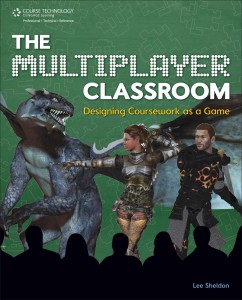Book Review: The Multiplayer Classroom: Designing Coursework as a Game by Lee Sheldon
 Teaching pharmacology in a physician assistant program means delivering a HUGE quantity of evolving information in a short amount of time. I look for class days where I can decompress material and review. Enter gamification, not a new concept but one relatively recently applied to education. Gamification takes game concepts and applies them to things that aren’t games. If you’ve ever collected frequent flyer miles or shopping rewards points, you’ve participated in gamification.
Teaching pharmacology in a physician assistant program means delivering a HUGE quantity of evolving information in a short amount of time. I look for class days where I can decompress material and review. Enter gamification, not a new concept but one relatively recently applied to education. Gamification takes game concepts and applies them to things that aren’t games. If you’ve ever collected frequent flyer miles or shopping rewards points, you’ve participated in gamification.
I introduced games into my classes with the Jeopardy Powerpoint template. It’s a great way to review material and break complicated information into separate parts for easier understanding. I have also been able to adapt several board games such as Pictionary, Apples to Apples and Clue to review class materials. However, as with many gamers, I have a desire to ‘level-up’ by delivering new content or offering methods for the students to individually review concepts in a game format.
I was recently introduced to a book that really attracted my attention. The Multiplayer Classroom: Designing Coursework as a Game is written by Lee Sheldon, an associate professor and multiplayer online game designer who was a script writer for TV shows such as Charlie’s Angels and Star Trek: The Next Generation.
Frankly, the book had me at Star Trek. But I was also intrigued by the idea of turning the classroom into a multiplayer game without needing a video game platform. Mr. Sheldon takes gaming concepts from the world of multiplayer fantasy games and redesigns his courses accordingly, an amazing application of team-based learning. Students work in guilds (teams) and individually to gain experience points (XP), take on quests (assignments) and defeat mobs (quizzes/tests). Grades are assigned based on the XP accumulated by each student.
According to Mr. Sheldon, this method of learning offers rewards for success rather than punishment for failure. Gaming lowers the stakes of failure and doesn’t focus all attention on grades. It does require some flexibility on the educator’s part to be able to respond and redesign when a course element doesn’t proceed as expected.
The book explains the course design in detail, utilizing the gaming elements and defining game terminology. It also discusses improvements in attendance and grades over years the courses were offered in a gaming format and shares comments from student evaluations which were conducted frequently. To offer additional perspectives, case studies across various disciplines and student age groups are included that were written by various educators that utilized multiplayer gaming techniques in their classrooms.
I found the book enjoyable particularly in offering an out-of-the-box way of looking at course design. While I don’t think I’ll be converting my entire course to a multiplayer game, I do feel I can adapt many of the techniques, particularly in developing team-based learning quests (cases) and offering varying levels of quizzes where students must master basic information before tackling more complex application of the material. As I build my courses for next year, I will be looking forward to a trial of multiplayer game concepts!
Image from The Multiplayer Classroom’s Facebook page.
 Follow
Follow